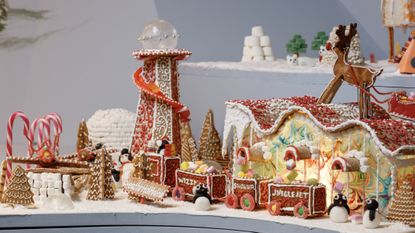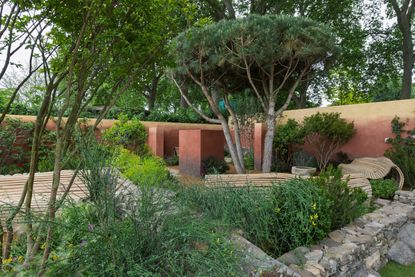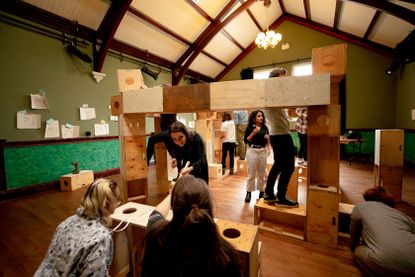Architecture Events
The best of the year's architecture events calendar, compiled by Wallpaper*
-
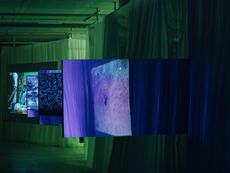
2025 Lisbon Architecture Triennale ponders the (literal and figurative) weight of humanity
Join us on a tour of the 2025 Lisbon Architecture Triennale, exploring the question ‘How Heavy is the City?’ and our impact on the planet
By Herbert Wright Published
-
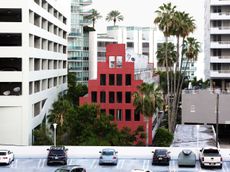
Max Creasy on the future of architectural photography and a shift to the ‘snapshot’
A show of photographer Max Creasy’s work opens at the AA in London, asking a key question: where is contemporary architectural photography heading?
By Ellie Stathaki Published
-
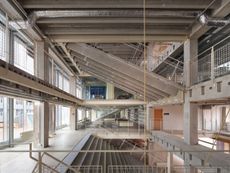
Is slowing down the answer to our ecological challenges? Copenhagen Architecture Biennial 2025 thinks so
Copenhagen’s inaugural Architecture Biennial, themed 'Slow Down', is open to visitors, discussing the world's ‘Great Acceleration’
By Marwa El Mubark Published
-
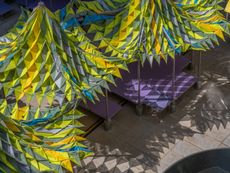
Shanghai’s biennial, RAMa 2025, takes architectural exploration outside
RAMa 2025, the architecture biennial at Rockbund Art Museum in Shanghai, launches, taking visitors on a journey through a historic city neighbourhood – and what it needs
By Phineas Harper Published
-
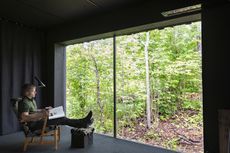
A carbon-emission-busting house, yeast-biomass building, and more ‘Designs for a Cooler Planet’
‘Designs for a Cooler Planet’ returns to Aalto University in Finland as part of the annual Helsinki design and architecture week, highlighting buildings, materials and solutions towards a better future
By Natasha Levy Published
-
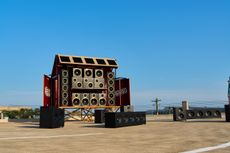
Germane Barnes just transformed a humble Indiana parking garage into an enormous sub-woofer system
With Joy Riding, the Miami-based designer’s installation at Exhibit Columbus, Barnes celebrates togetherness by evoking Black car culture
By Audrey Henderson Published
-
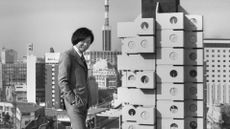
How an icon of Japanese Metabolist architecture took on a life of its own – even after its destruction
When Kishō Kurokawa designed the modular Nakagin Capsule Tower more than 50 years ago, he imagined it boarding ships and travelling the world. Now it has, thanks to a new show at MoMA
By Diana Budds Published
-
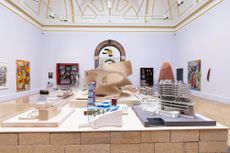
At the Royal Academy summer show, architecture and art combine as never before
The Royal Academy summer show is about to open in London; we toured the iconic annual exhibition and spoke to its curator for architecture, Farshid Moussavi
By Tim Abrahams Published
-
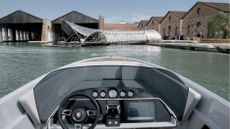
Porsche and the Norman Foster Foundation rethink the future of mobility
A futuristic Venice transport hub, created with the Norman Foster Foundation for Porsche’s The Art of Dreams programme, is a star of the city’s Architecture Biennale
By Simon Mills Published
-
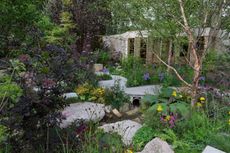
Use of architectural fungi exhibits a greener side to the RHS Chelsea Flower Show
Tom Massey and Je Ahn’s ‘Avanade Intelligent’ gold medal-winning show garden leans into the RHS’ aspirations for a more sustainable Chelsea Flower Show
By Matt Collins Published
-
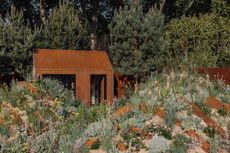
Innovative coastal garden turns heads at this year’s RHS Chelsea Flower Show
Landscape Designer Nigel Dunnett’s ‘Hospitalfield Arts Garden’ at Chelsea Flower Show 2025 has been making waves with its progressive approach to sustainable landscape and planting design
By Matt Collins Published
-
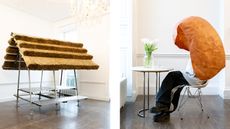
From a mobile pub to a thatched canopy: Japanese architecture and craft explored at AA show in London
'Distillation of Architecture', a new AA show in London, pairs architects with materials and makers in an exploration of craft through the Japanese lens
By Ellie Stathaki Published
-
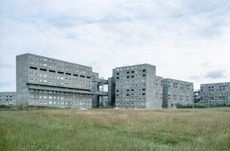
‘Concrete Dreams’: rethinking Newcastle’s brutalist past
A new project and exhibition at the Farrell Centre in Newcastle revisits the radical urban ideas that changed Tyneside in the 1960s and 1970s
By Smilian Cibic Published
-
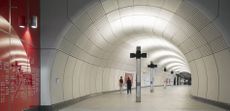
2024 Stirling Prize goes to the Elizabeth Line: we speak to the winners
The 2024 RIBA Stirling Prize winner has been revealed, with the Elizabeth Line crowned as the year's best building project; find out about the design and what else made it into the running for the UK's most coveted architecture award
By Ellie Stathaki Last updated
-
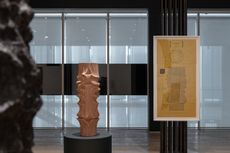
Germane Barnes exhibition explores notions of classical architecture and identity
Germane Barnes exhibition 'Columnar Disorder' opens at the Art Institute of Chicago
By Ellie Stathaki Published
-
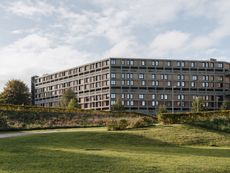
The 2024 RIBA Reinvention Award, Muyiwa Oki, and making reuse ‘more special than ever’
The shortlist for the 2024 RIBA Reinvention Award has been announced today; we caught up with the institute’s president Muyiwa Oki to discuss the honour
By Ellie Stathaki Published
-
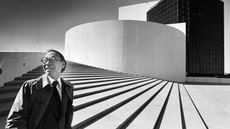
'Famous but understudied': IM Pei exhibition at M+ in Hong Kong is a deep dive into the architect's legacy
'IM Pei: Life is Architecture' is an exhibition celebrating the global icon; and it's just opened at M+ in Hong Kong
By Ijeoma Ndukwe Published
-
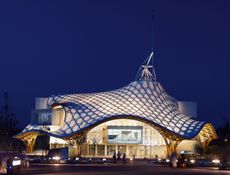
Shigeru Ban has perfected the art of enclosure
Taschen’s new XXL monograph, Shigeru Ban. Complete Works 1985 – Today, brings out the sheer diversity of the Japanese architect’s work
By Jonathan Bell Published
-
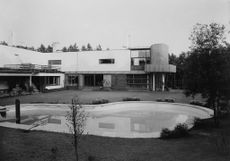
Skateboarding in swimming pools: the case of Alvar Aalto’s Villa Mairea
A family of shows at Aalto2 Museum Centre explores skateboarding in swimming pools through the case study of Alvar Aalto’s Villa Mairea in Finland
By Francesca Perry Published
-
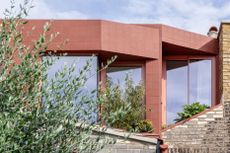
Don’t Move, Improve 2024: Aden Grove wins Home of the Year
Don’t Move, Improve 2024 reveals its winners celebrating the best London home renovations
By Ellie Stathaki Last updated
-
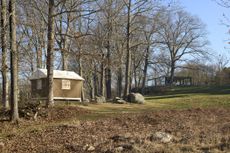
Shigeru Ban’s mini Paper Log House welcomed at The Glass House
'Shigeru Ban: The Paper Log House' is shown at The Glass House in New Canaan, USA as the house museum of American architect Philip Johnson plays host to the Japanese architect’s model temporary home concept
By Adrian Madlener Published
-
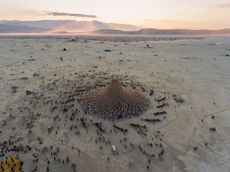
‘Bio-spaces’ exhibition at Roca London Gallery celebrates biophilic design
‘Bio-Spaces: regenerative, resilient futures’ opens at the Roca London Gallery as ‘a call to action to stop designing nature out’
By Clare Dowdy Published
-
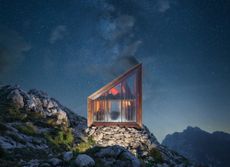
The visual feast of the Sony World Photography Awards 2024 is revealed
The Sony World Photography Awards 2024 winners have been revealed – we celebrate the Architecture & Design category’s visual artists
By Ellie Stathaki Published
-
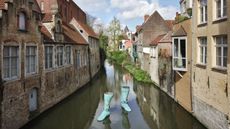
Bruges Triennial 2024 takes over the city with contemporary art and architecture
Bruges Triennial 2024, themed 'Spaces of Possibility', considers sustainability and liveability within cities, looking towards a greener future
By Ellie Stathaki Published
-
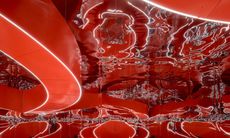
3XN exhibition in Copenhagen discusses architecture through our senses
3XN exhibition 'Aware: Architecture and Senses' opens its doors at the Danish Architecture Center in Copenhagen
By Ellie Stathaki Published
-
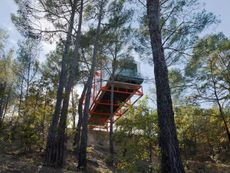
Richard Rogers exhibition delves into the architect’s ideas at Chateau La Coste
A new Richard Rogers exhibition created by Ab Rogers opens at the late architect’s final design, the Drawing Gallery at Chateau La Coste in France
By Ellie Stathaki Published
-
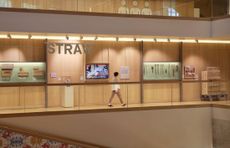
London architecture exhibitions 2023: a guide to the best shows this month
Exciting, beautiful and thought-provoking London architecture exhibitions; here's our pick of the finest in town, to visit and enjoy this month
By Ellie Stathaki Published
